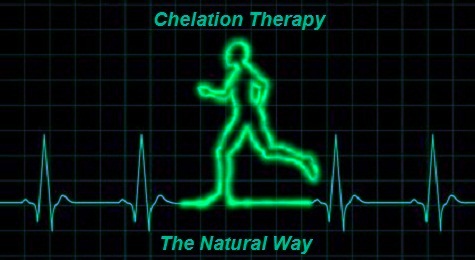Alternative Therapies
- Alternative Medicine
- Access Bars
- Access Body Processes
- Acupressure
- Acupuncture
- Akashic Records
- Angel Healing
- Aura Reading
- Ayurveda
- Bach Flower Remedies
- Bio-Energetics
- Breathwork
- Cosmetic Acupuncture
- Crystal Healing
- Cupping Therapy
- Emotional Freedom Technique (EFT)
- Ergonomics
- Fengshui
- Holistic Solutions
- Holy Fire Reiki
- Homeopathy
- Hypnotherapy
- Jikiden Reiki
- Manual Therapy
- Meditation
- Motivational Counseling
- Mudra Healing
- Naturopathy
- Neuro Linguistic Programming (NLP)
- Panchakarma (Ayurveda)
- Past Life Regression
- Physiotherapy
- Pranic Healing
- Pyramids
- Reiki
- Rudraksh
- Shamanic Healing
- Silva Mind Control Method
- Sujok therapy
- Tarot
- Tera MaiTM Seichem
- Theta Healing
- Unani Medicine
- Yoga
Diseases & Conditions
- Acne & Pimples
- Allergies
- Arthritis
- Asthma
- Behavioural Disorders
- Dandruff
- Diabetes
- Emotional Problems
- Gallstones
- Gastritis
- Hairloss
- Heart Diseases
- Hormonal Problems
- Hypertension
- Immune Disorders
- Infections
- Infertility
- Jaundice
- Kidney Disorders
- Liver Disorders
- Menstrual Disorders
- Migraine
- Neck & Back Pain
- Obesity
- Osteoporosis
- Peptic Ulcer
- Prevention
- Prostate Problems
- Psoriasis
- Sexual Dysfunctions
- Sinusitis
- Sleep Disorders
- Skin Diseases
- Stress
- Thyroid Disorders
- Ulcerative Colitis
- Urinary Infections
General Wellness

What is Chelation Therapy?
Chelation therapy is a method of removing substances from the body through intravenous infusions, and occasionally, orally. In the process of chelation a substance is attached to and transformed by a chelating agent. The name chelation comes from the Greek 'chele', meaning claw, which refers to the 'claw-like' structure of the organic chemical ethylene diamine tetra-acetic (EDTA), the most universally used substance for this process. EDTA is a man-made amino acid, which has a particular affinity for toxic metals such as mercury, cadmium, aluminium and lead. If EDTA meets with these substances through an intravenous infusion, they are 'grabbed' and then secreted in bodily wastes. EDTA was first used in the United States in 1948 as treatment for industrial workers suffering from lead poisoning and, in America, has since become the treatment-of-choice for lead poisoning. Other substances can be used as chelating agents, during the Second World War the British used British Anti-Lowest (BAL), as a poison gas antidote.
While it is accepted that chelation effectively removes toxic metals from the blood, there is much controversy about the efficacy of chelation therapy for thickened arteries and other disorders. Many claims have been made for its value in breaking down the arterial plaque which blocks the arteries in atherosclerosis. It is presented as a relatively non-toxic and risk-free therapy, which has more long-term benefit for the patient than bypass surgery, and can be used by most people. However, those with healed tubercular lesions of the lungs would not be recommended chelation therapy as it might break down the calcium around the lesions, releasing the tubercular bacillus. Kidney function tests should also be carried out as chelation might over-load the kidneys and in-patients with some types of severe kidney problems, the therapy would not be prescribed. The lobby opposing the use of chelation therapy for thickened arteries claims that there is no actual proof of its efficacy and that its use could fatally delay surgery.
People who have responded well to chelation therapy often show improvements for some time after the therapy has stopped. As 98% of the chelating agent is passed out of the body within 48 hours, the theory is that prolonged benefits are the result of the body, cleared of toxins, being able to utilise its natural healing forces. Proponents of the therapy believe that many of the vague and unexplained ills experienced by many people could be to do with the toxic environment in which we live, damaging the chemical balance of our systems. They believe that chelation therapy might help to detoxify the body, restoring balance and good health.
Conditions that may respond to chelation therapy
- Alzheimer's
- Angina
- Arterial diseases
- Arthritis
- Claudication (leg pain)
- Heavy metal poisoning (including mercury)
- High blood pressure
- Parkinson disease
- Psoriasis
- Scleroderma
- Stroke
Treatment
Treatment for atherosclerosis consists of a number of intravenous infusions. Tests will be carried out to individually tailor the infusion to the patient and their health needs. The number of infusions usually falls between 5 and 40, depending on the condition being treated, and its severity. Infusions take anything between 1.5 and 4 hours and can happen once or twice a week. Patients are usually also recommended to follow a self-help plan, which will include nutritional guidelines.
For heavy metal poisoning oral chelation is possible, but it is best to be supervised by an expert. For those concerned about mercury poisoning from amalgam fillings (see our fact sheet on dental amalgam), mercury-free dentists should be able to supervise the chelation process. The issue of mercury poisoning through dental amalgam and thus the need for chelation, is a contentious one. Detractors claim that individuals can be misled by false readouts of machines that measure levels of mercury, leading to lengthy, painful and often expensive dental treatment that is not necessary. However, there is acknowledgement that a small percentage of the population are sensitive to the mercury in their fillings, and there are many testimonies from individuals who feel their lives and health have improved through chelation and the removal of amalgam fillings.


